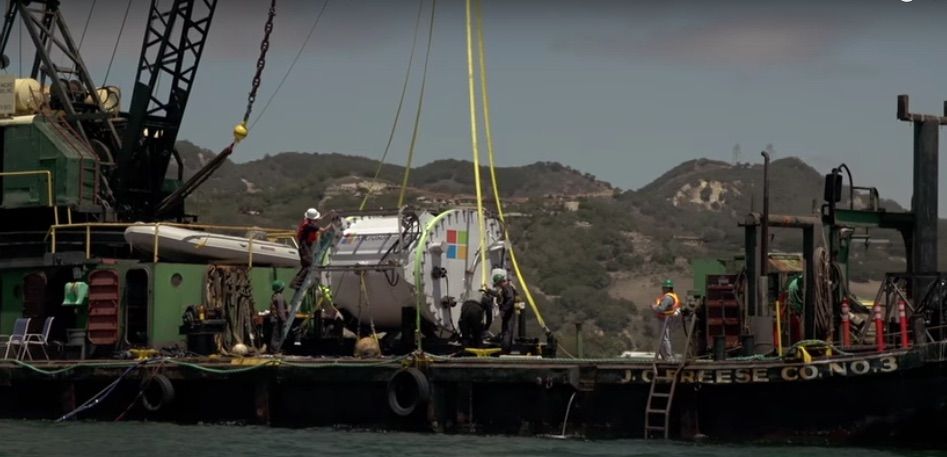
The ocean is home to many strange relics of human existence, from a Texas-sized garbage patch, to barnacle-encrusted oil rigs to gold-bullion-filled shipwrecks. Now, scientists are hoping to add cloud-computing data centers to the list.
Microsoft Research has built a prototype data center that it recently deployed beneath the waves off the California coast. Ultimately, the new research endeavor, called Project Natick, aims to use seawater to cool the thousands of computers used in a typical data center. Building underwater data centers could also speed up data delivery, the researchers involved say.
"Half of the world's population lives within 200 kilometers [124 miles] of the sea, so bringing data centers to the ocean made a huge amount of sense to be able to make the actual cable to our customers as short as possible," Jeff Kramer, a research engineer with Microsoft, said in a video about the project. [The 10 Craziest Environmental Ideas]
Energy hogs
Data centers are incredibly energy intensive; in 2013 they gobbled up about 91 billion kilowatt-hours of electricity, or the energy produced by 34 coal-fired power plants, according to the Natural Resources Defense Council. Much of that energy goes toward cooling the blazing hot computer chips inside the server racks.
What's more, companies typically place data centers in remote areas, such as the massive Google data center located in The Dalles, Oregon, because the huge amount of land needed is less expensive there. But as cloud computing becomes the norm, more people's essential data is stored in these far-flung places, meaning the information must travel a longer distance, taking longer to reach the end user.
Long-term ocean dwellers
Sign up for the Live Science daily newsletter now
Get the world’s most fascinating discoveries delivered straight to your inbox.
While the concept sounds outlandish, Microsoft's underwater server capsule relies on many established technologies. The servers are standard servers encased in a steel drum 8 feet (2.4 m) in diameter, with sturdy bolts and fittings to make it waterproof. The steel drum is fitted with tubes and cables that transfer heat from the hot chips inside to the cool ocean outside. The computer chips housed inside are cooled with liquid nitrogen.
Long-term, the team hopes these capsules can sit at the seafloor, quietly powering the world's Internet usage, without any maintenance for five years. So the team needs to make improvements in the materials to make that a reality, according to a press release.
Right now, cables snake out from the water to the shoreline to power the servers. But one day, the team hopes to generate the power to operate the servers beneath the waves by employing underwater turbines.
In November 2015, the team used a crane to drop the server 30 feet (9 m) below the water's surface off the Central California coast. After 105 days, the team found the servers performed better than they hoped, even running some commercial cloud software. To see if the project is viable, Microsoft is planning to deploy additional underwater servers off the coast of Florida or somewhere in Northern Europe.
Follow Tia Ghose on Twitterand Google+. Follow Live Science @livescience, Facebook & Google+. Original article on Live Science.

Tia is the managing editor and was previously a senior writer for Live Science. Her work has appeared in Scientific American, Wired.com and other outlets. She holds a master's degree in bioengineering from the University of Washington, a graduate certificate in science writing from UC Santa Cruz and a bachelor's degree in mechanical engineering from the University of Texas at Austin. Tia was part of a team at the Milwaukee Journal Sentinel that published the Empty Cradles series on preterm births, which won multiple awards, including the 2012 Casey Medal for Meritorious Journalism.
Most Popular





